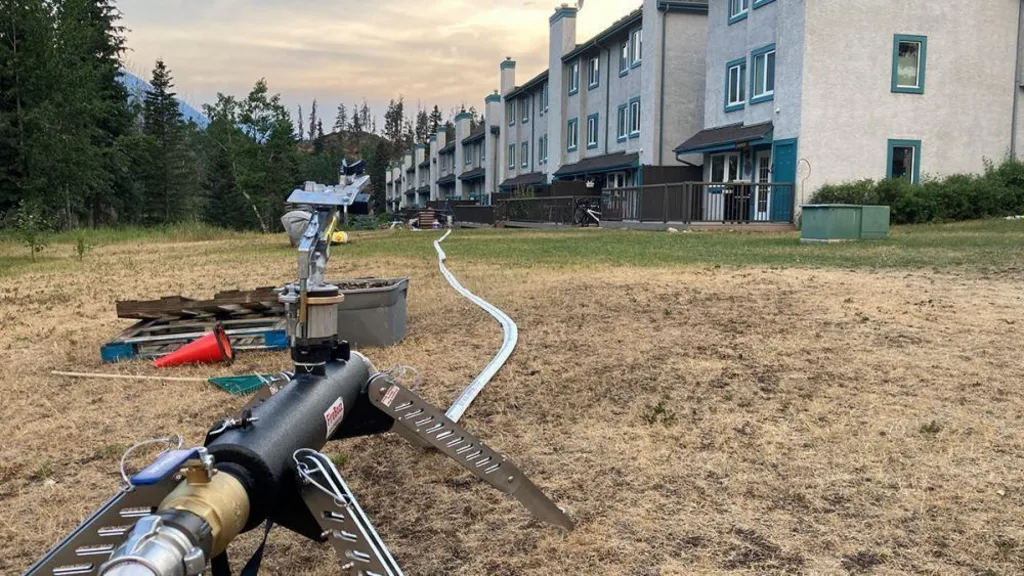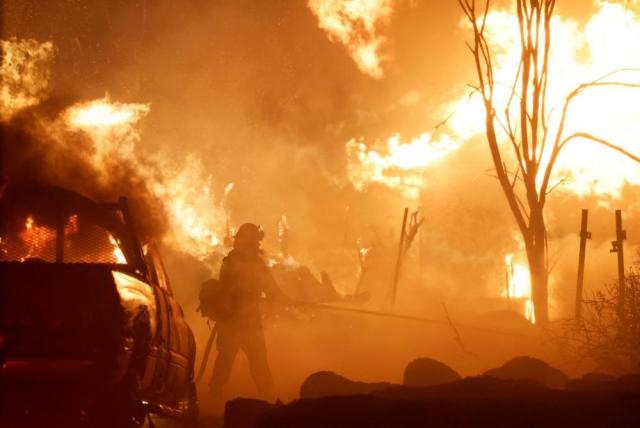The serene beauty of Jasper, a famed resort town nestled in the Canadian Rockies, has been shattered by an unprecedented wildfire crisis. The town, renowned for its breathtaking landscapes and tranquil environment, is now grappling with a devastating inferno that has forced the evacuation of thousands and threatened its historic landmarks. As the flames continue to ravage the area, emergency responders and local officials are battling not only the fire itself but also the severe impacts on the community and environment.
Wildfire Crisis Unfolds
The Scale of the Disaster
The recent outbreak of wildfires in Jasper National Park has been catastrophic. Reports indicate that more than 25,000 residents and visitors have been evacuated from the area as the blaze spread uncontrollably. The wildfires, fueled by a combination of dry conditions, extreme heat, and lightning strikes, have caused significant damage to buildings and infrastructure in the town. According to park officials, the fire has led to “significant loss” within Jasper, with entire areas reduced to ashes.
Spread of the Flames
The fires in Jasper are part of a larger wildfire crisis affecting western Canada. The provinces of Alberta and British Columbia have been particularly hard hit, with hundreds of fires igniting across the region. The situation has been exacerbated by an intense heat wave and a staggering 58,000 lightning strikes recorded in the past week. The extreme weather conditions have not only fueled the flames but also complicated firefighting efforts.
Response and Recovery Efforts
Firefighting and Assistance
In response to the crisis, an extensive firefighting operation has been mobilized. Approximately 1,900 firefighters from Alberta are on the ground, supported by teams from Alaska and Australia. These brave men and women are working tirelessly to contain the fires and protect vital infrastructure. Among the critical assets being safeguarded is the Trans Mountain Pipeline, a crucial piece of infrastructure that runs through Jasper National Park. As of the latest reports, the pipeline remains operational, thanks in part to protective measures such as sprinklers.
Coordination and Support
The scale of the wildfire crisis has prompted a coordinated response from both provincial and federal authorities. Environment Canada has indicated that relief may be on the horizon, with forecasts predicting 1 to 2 centimeters of rain. This potential reprieve could help mitigate the severity of the fires. Prime Minister Justin Trudeau has approved federal assistance for Alberta, including deploying Canadian Forces resources and providing emergency wildfire support. The federal government is also coordinating firefighting efforts and airlift assistance to bolster the response.

Impact on Local Communities
Evacuation and Displacement
The wildfire has had a profound impact on the local population. Residents and tourists alike have been forced to flee their homes and seek refuge elsewhere. Eleonor Dumlao, who evacuated with her family, described the experience as chaotic and frightening. “It was so very terrible experience for us,” she recounted, highlighting the panic and uncertainty that characterized their escape. Similarly, Daniel Turner and his friends faced a nightmarish evacuation, encountering bumper-to-bumper traffic and ultimately seeking refuge in a parking lot.
Damage to Historic Sites
One of the most concerning aspects of the wildfire is its effect on historic and cultural landmarks. The Fairmont Jasper Park Lodge, a storied resort that has hosted numerous guests over the years, has been affected by the fire. While all guests were safely evacuated, the extent of the damage to the lodge remains unclear. Spokesperson Anastasia Martin-Stilwell expressed the resort’s devastation and praised the dedication of first responders. The impact on such iconic sites underscores the deep emotional and historical loss experienced by the community.
Environmental and Health Concerns
Air Quality and Environmental Damage
The fires have not only caused direct damage but also raised significant environmental and health concerns. Jasper National Park, the largest national park in the Canadian Rockies, has seen deteriorating air quality due to the smoke and particulate matter released by the fires. The intense heat and smoke have created hazardous conditions for residents and wildlife alike. Weather experts have noted that the fire is so intense it may be creating its own weather systems, including generating thunder and lightning, which further complicates firefighting efforts.
Broader Implications
The broader implications of the wildfire crisis extend beyond Jasper and Alberta. Wildfires have also affected other regions, including several U.S. states such as California and Utah. The National Weather Service has issued heat warnings for over 30 million people across the U.S., highlighting the widespread nature of the climate crisis. The situation in Jasper serves as a stark reminder of the urgent need for effective climate action and disaster preparedness.
Political and Community Reactions
Official Statements and Reactions
Jasper’s Mayor, Richard Ireland, has expressed profound sorrow and empathy for those affected by the fires. In a heartfelt message on Facebook, he acknowledged the overwhelming destruction and the emotional toll on the community. Premier Danielle Smith has urged residents to “leave safely” and has maintained constant communication with authorities. The federal government’s support, including the deployment of Canadian Forces and additional resources, reflects the severity of the situation and the commitment to aiding affected communities.
Community Resilience and Support
Despite the devastation, the community has shown remarkable resilience and solidarity. The support from first responders, volunteers, and fellow citizens has been crucial in managing the crisis and providing relief to those impacted. The efforts of these individuals highlight the strength and determination of the Jasper community in the face of adversity.
Conclusion
The wildfire crisis in Jasper and the broader region is a tragic and complex situation with far-reaching consequences. The fires have caused significant damage, displaced thousands, and posed severe environmental and health risks. However, the coordinated response from firefighters, federal and provincial authorities, and community members offers hope for recovery and rebuilding. As Jasper begins to come to terms with the impact of the fires, the resilience and solidarity of its people will play a vital role in navigating the challenges ahead and ensuring the restoration of their beloved town.


